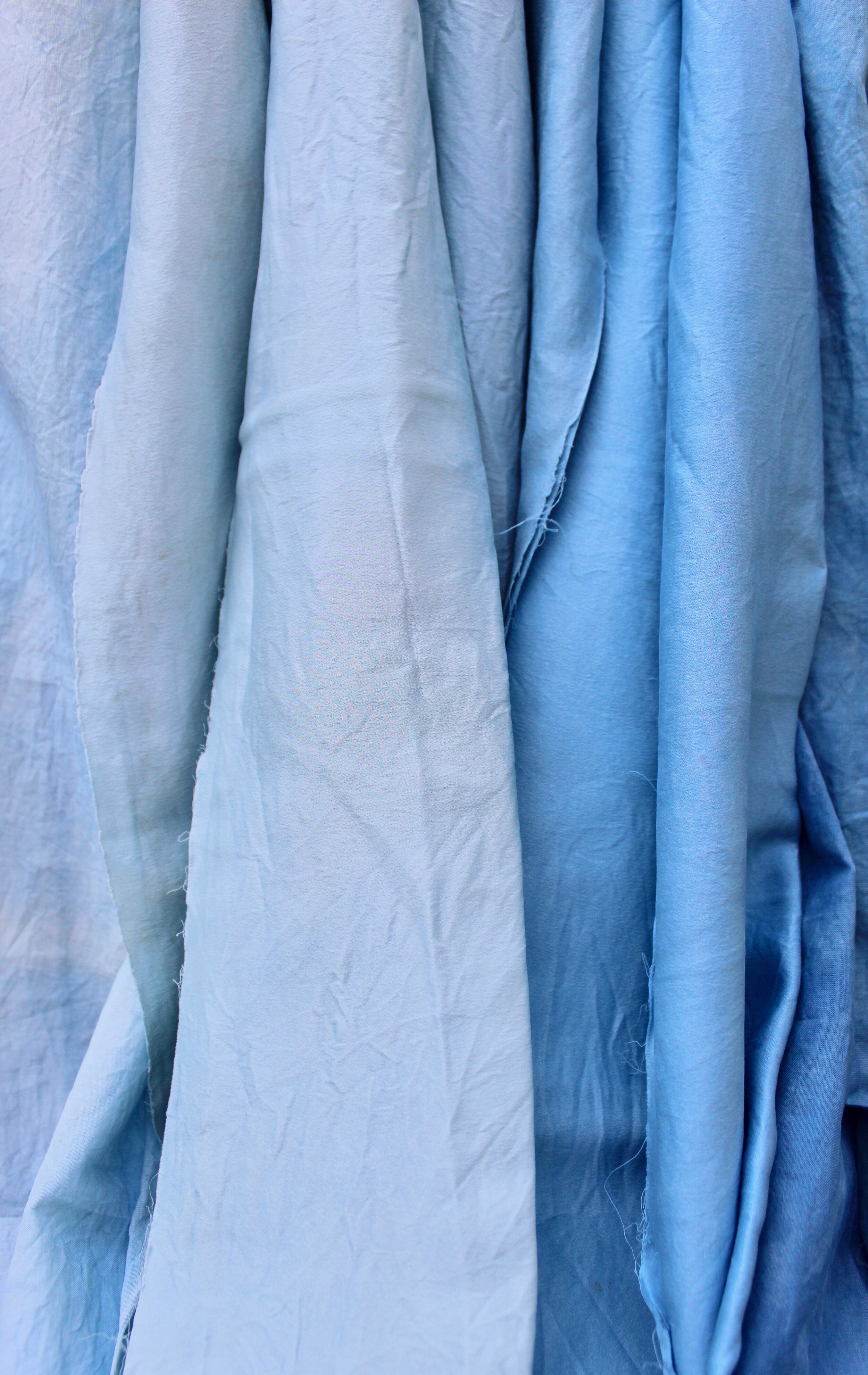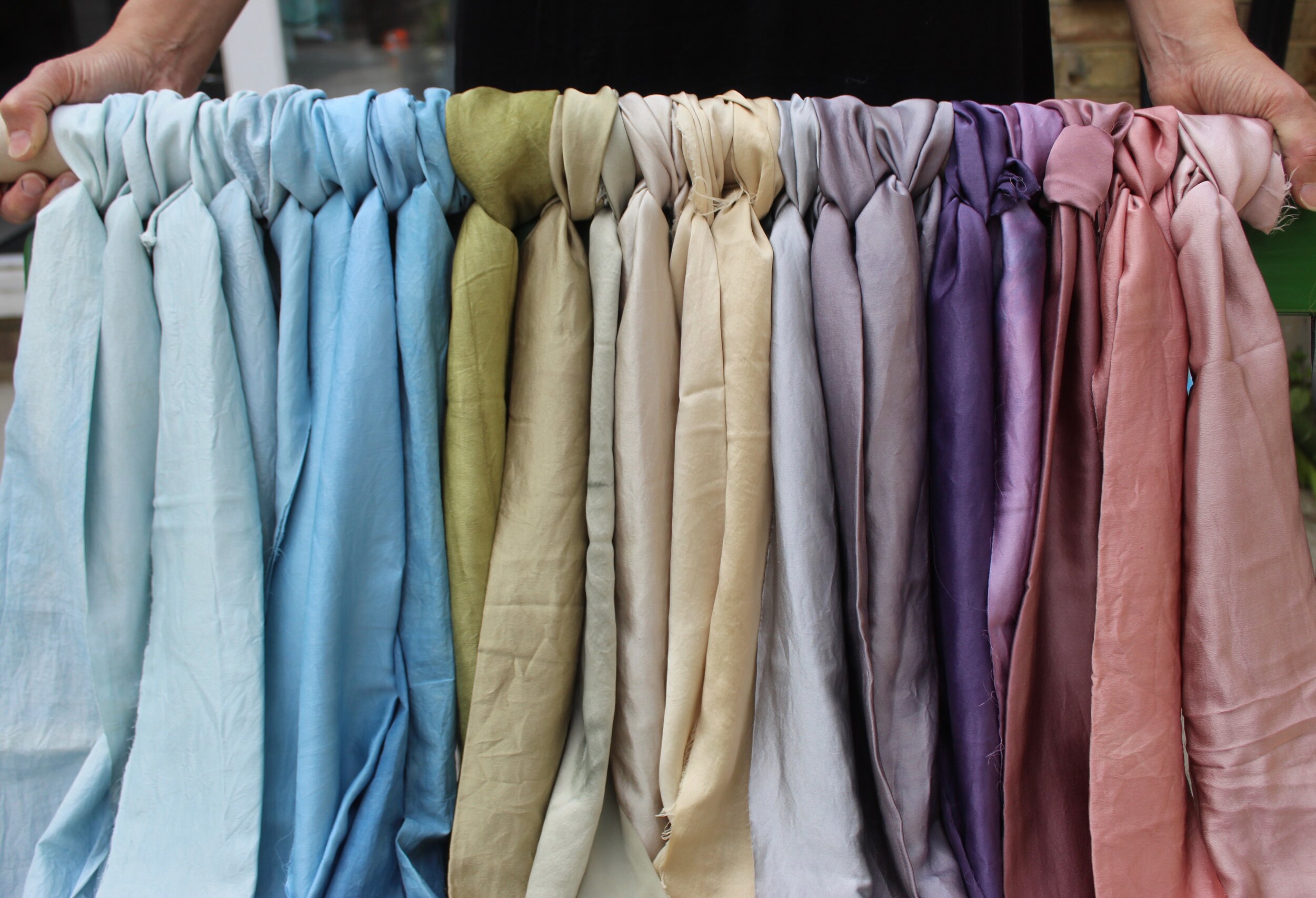Our Palette
The Dyers Circle Colour Palette: How it works
The palette made by all the members of dyers’ circle is a collective colourwheel made up of members’ contributions.
Each colour will lead you to a recipe, it’s author and where the ingredients and plantstuffs or extracts came from. This way, through following a colour pathway, you can access the natural dyers as well as the growers and producers of dyestuffs.
The palette leads you to all the information you need; if you need an intense red: who can dye it, what components do you need to make it and where can you procure them.
The palette within the Dyers Circle is dyed on silk and used as a starting point to inspire others to add their own recipes to the prism of colours we can constantly expand, using plant-based ingredients.
Our dyestuffs and mordants are found in leaves, roots, flowers and trees and their impact on their surrounding environment is gentle and nourishing, safely biodegradable. Many of them are bio-active, often medicinal. We use the knowledge of past, mindful generations to expand a rich exploration of colour that increases one’s sense of place and protects many rural communities.
The palette is predominantly warm like the colour of the sun playing on leaves. A wide chromatic spectrum is available but we can observe a paradox: green is difficult to create without overdyeing, despite being the most widely seen colour in nature. Green is not easily created with natural dyes.
What we can distinguish is a vast amount of warm hues from ochre to a bright shimmering yellow and many rich deep madder reds. Nature has made a predominance of warm shades favouring all the colours of the sun, whereas cool tones are more difficult to make. We have to use vat dyes and ferment elements to create the blues of indigo, which is a more complex process… Equally, the cones in our eye’s retina are more attuned to longer wavelengths, making us more sensitive to warmer tones within the light spectrum. The rich complexity of a natural dye is more appealing to the human eye that balances the subtle variety of shades building the colour through optical mixture. The depth of hue obtained is always richer than a uniform synthetic alternative.
Our research in London is based on a combination of foraged local ingredients such as black berries, holly, rosehips, chestnut leaves, oak galls…and a mixture of urban waste, from tangerine peels to spent flower petals and Christmas trees. Plants and waste from a temperate climate. However, we know hub members from across the globe will add their local knowledge and expand the inventory of tinctorial plants so that we can cover each corner of our beautiful Earth with healthy, plant-derived colour. From New-Zealand to Sweden, members will be adding dyes from lichen and eucalyptus leaves, sharing knowledge of each ones local environments.
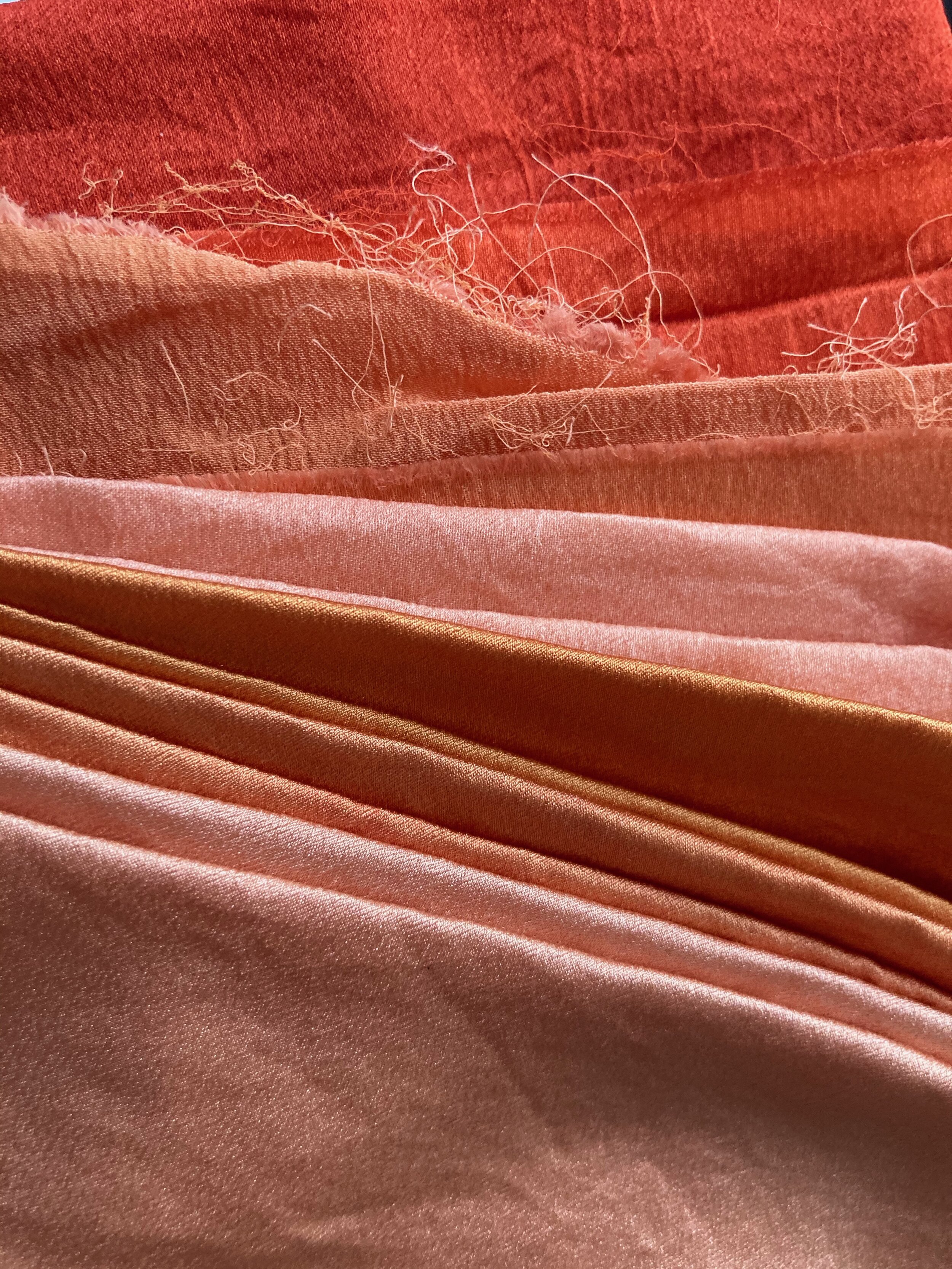

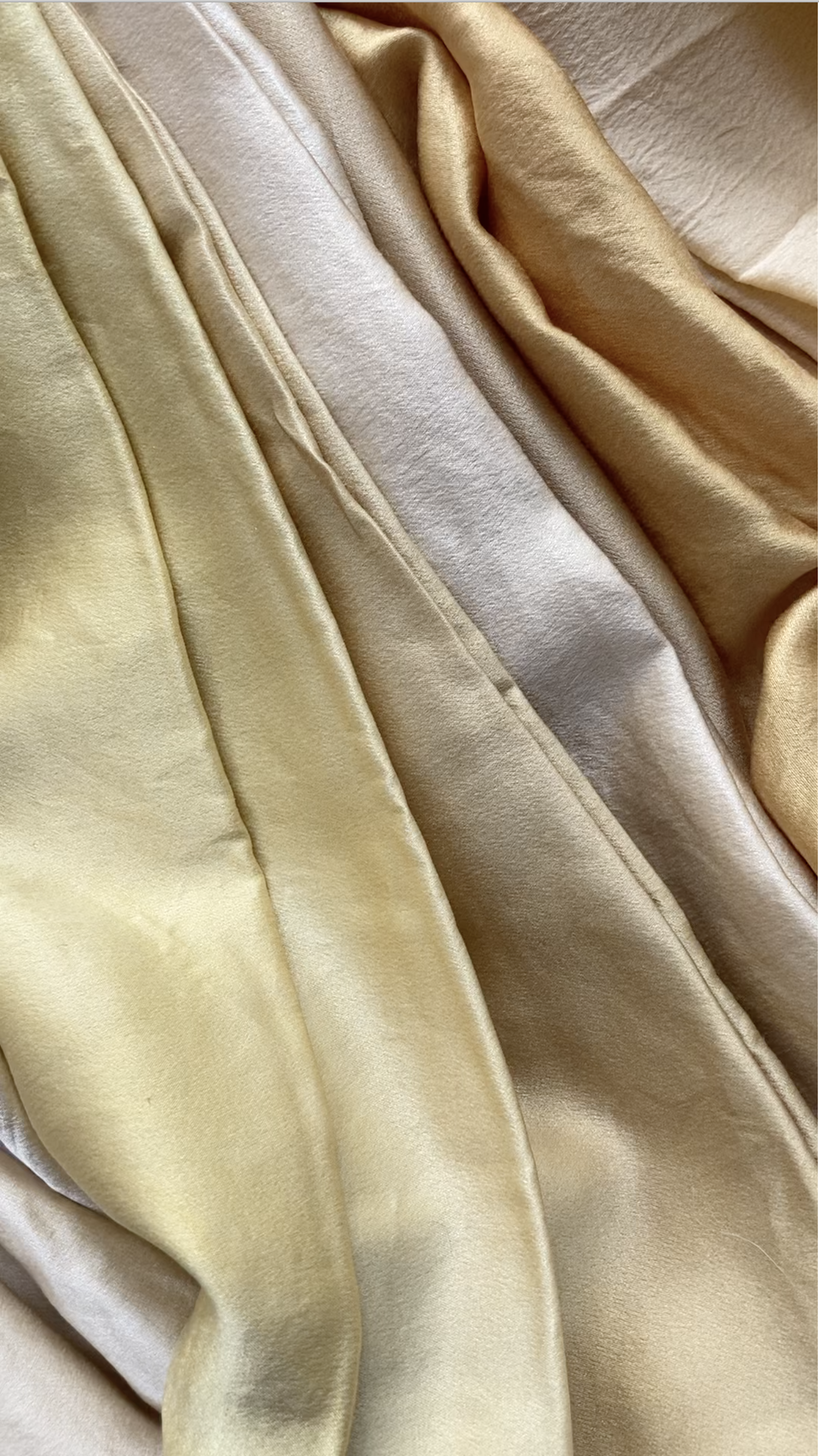
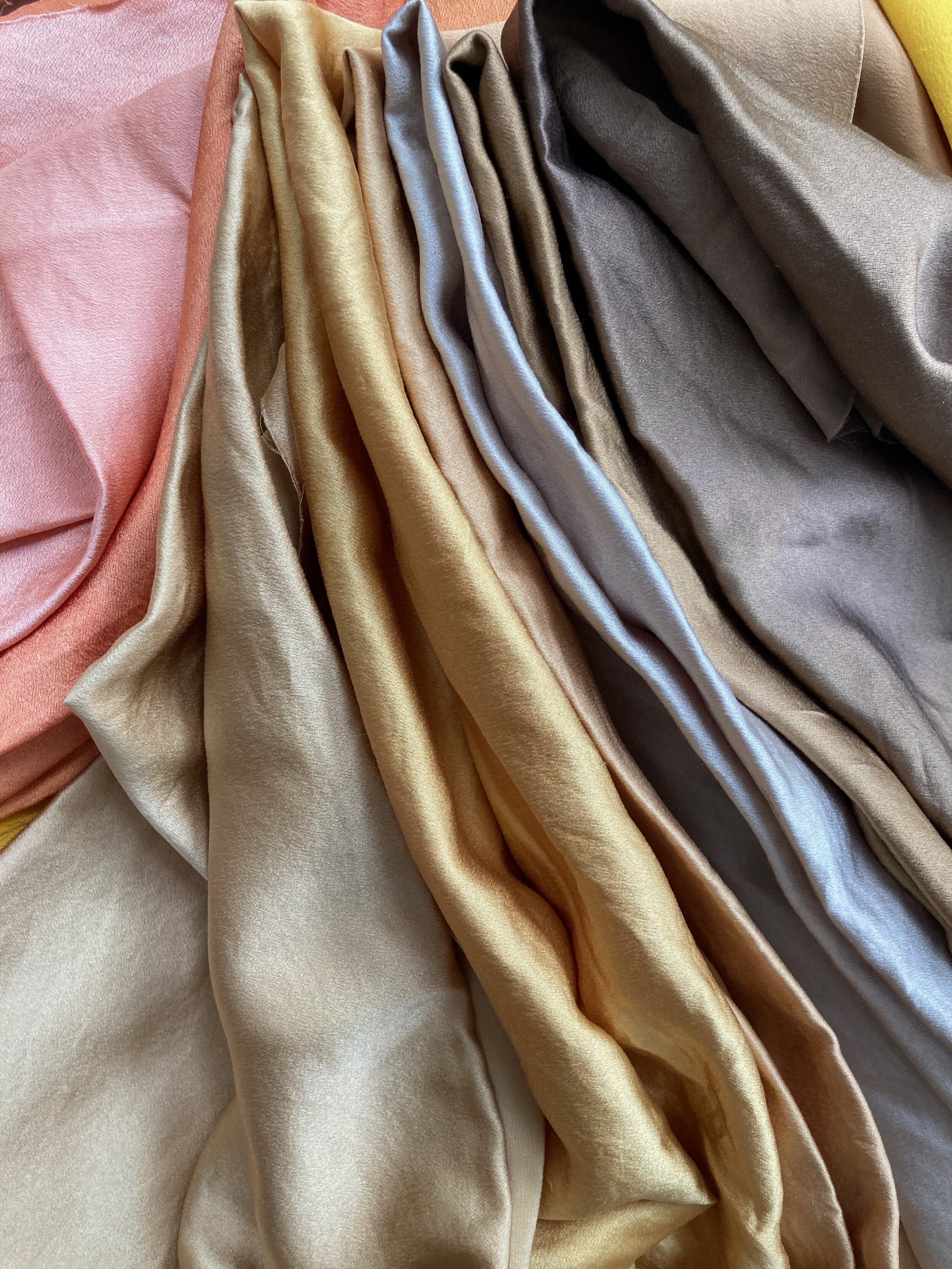

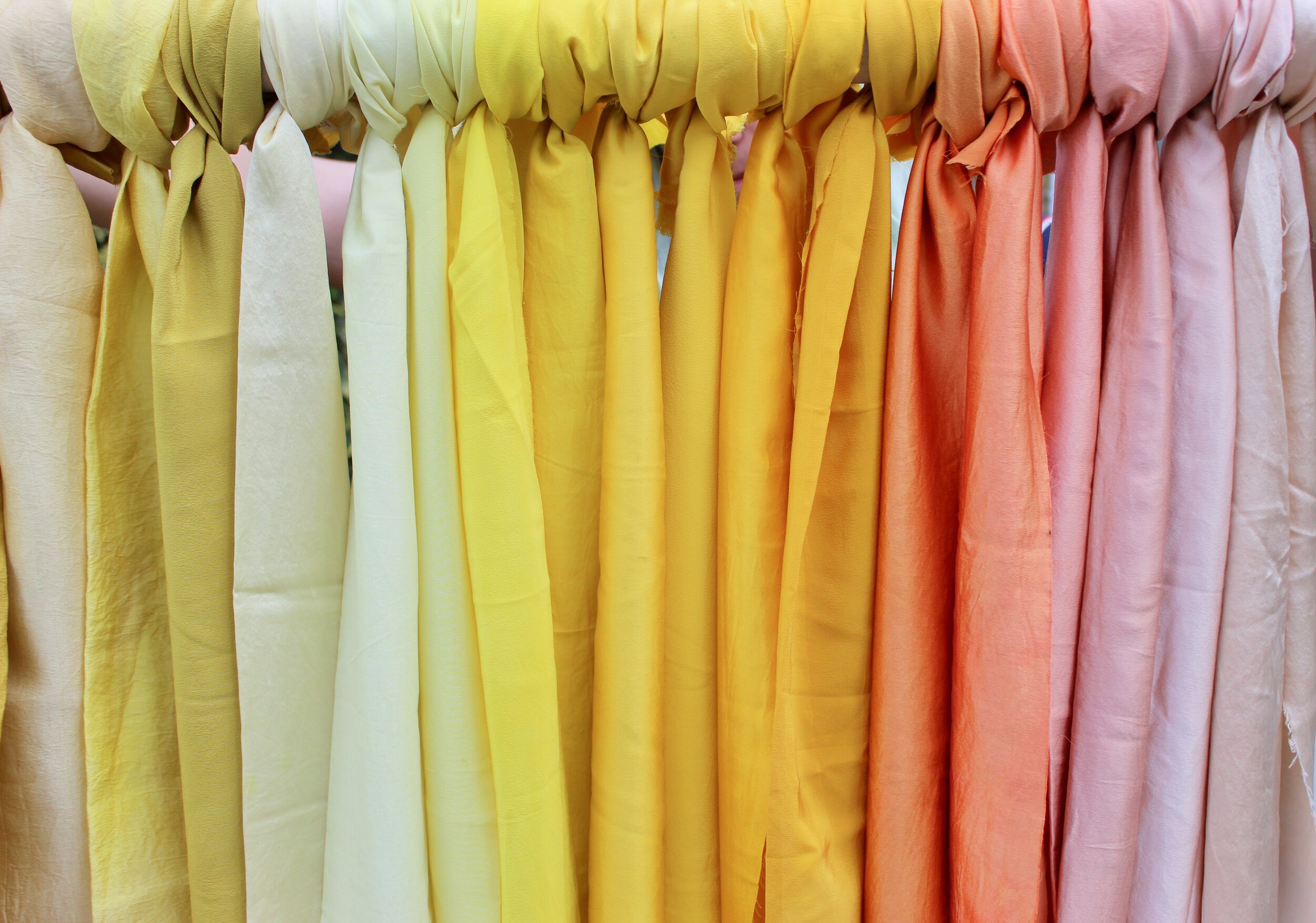



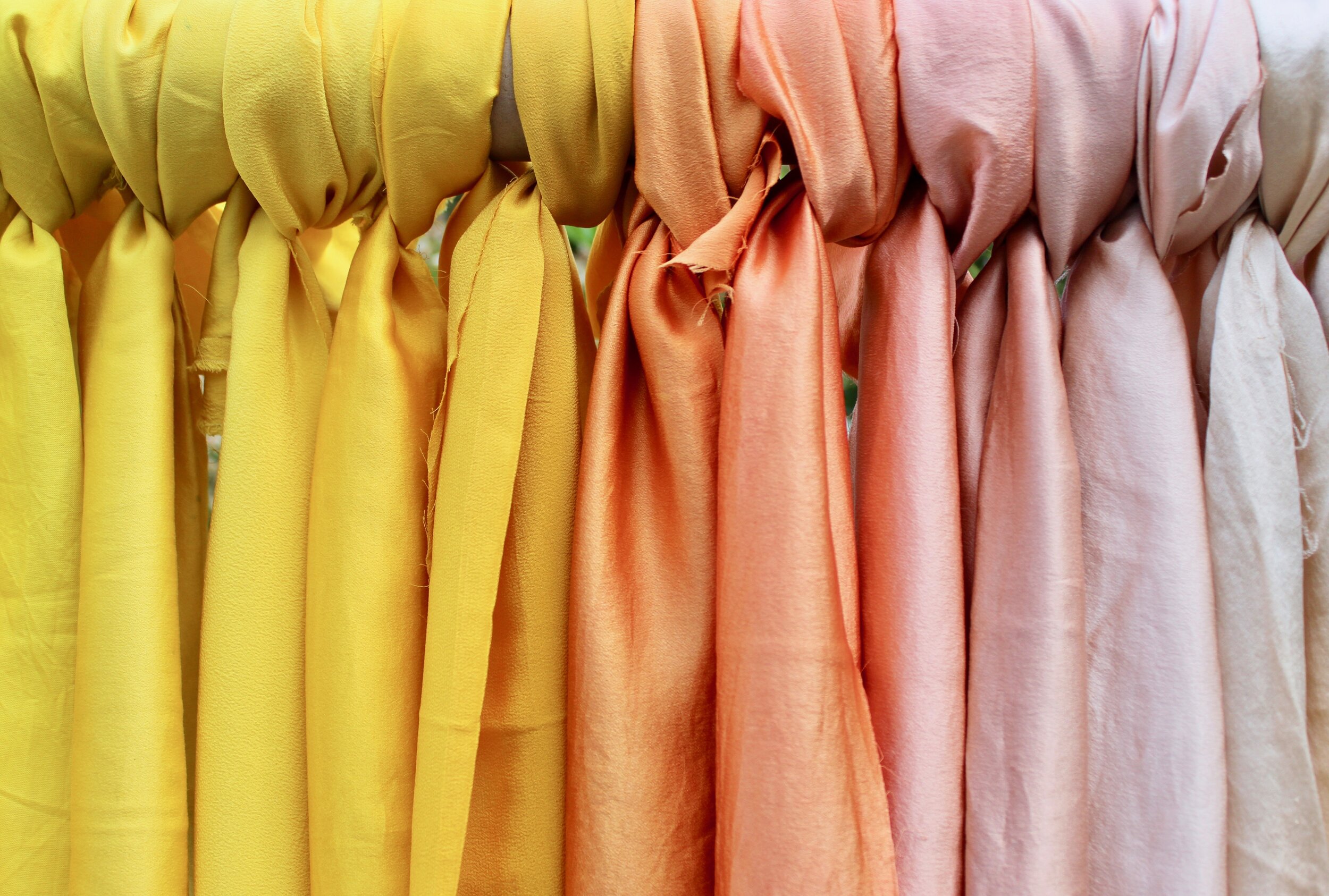
Sustainable
Botanical
Dyes

